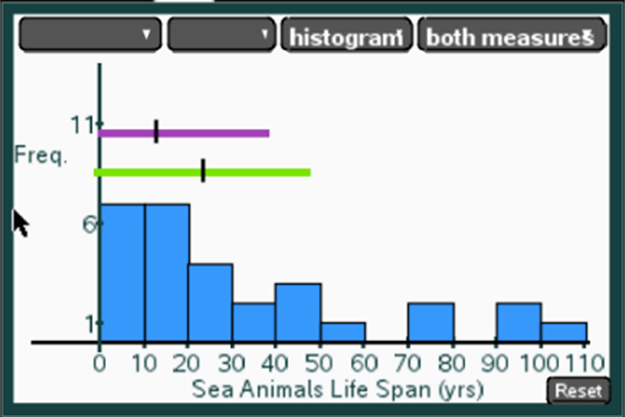Understanding
Students should recognize that in a bar graph, bars represent quantitative measures associated with categorical data. Whereas, the bars in histograms represent frequencies associated with quantitative values.
What to look for
Students consider what they can learn from different representations of the same data using a dot plot, a box plot and a histogram.Sample Assessment
Which of the segments represents the median and IQR?

Answer: The shorter segment that goes from 0 to just less than 40 because the distribution is skewed, the median is not in the center of the segment




